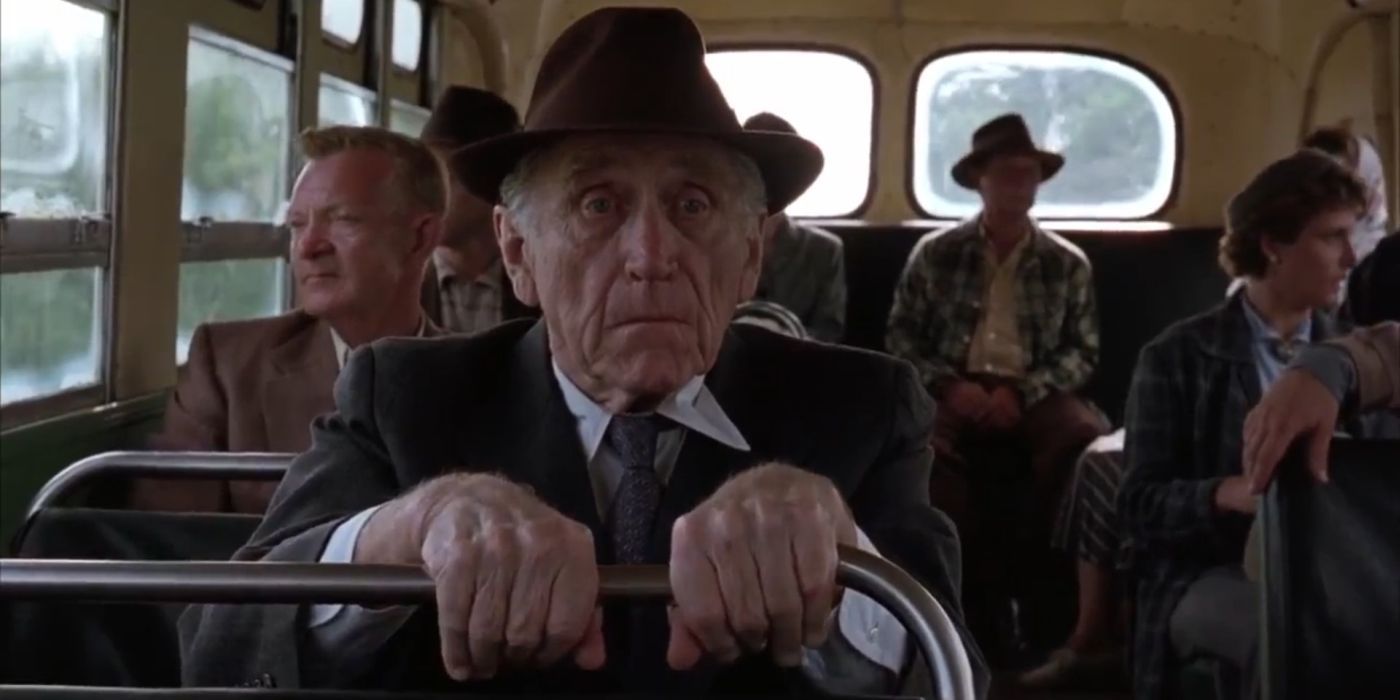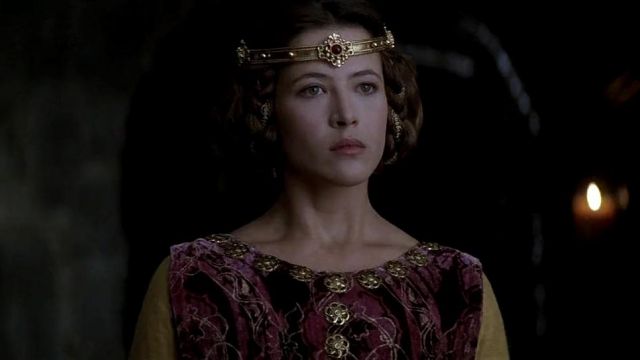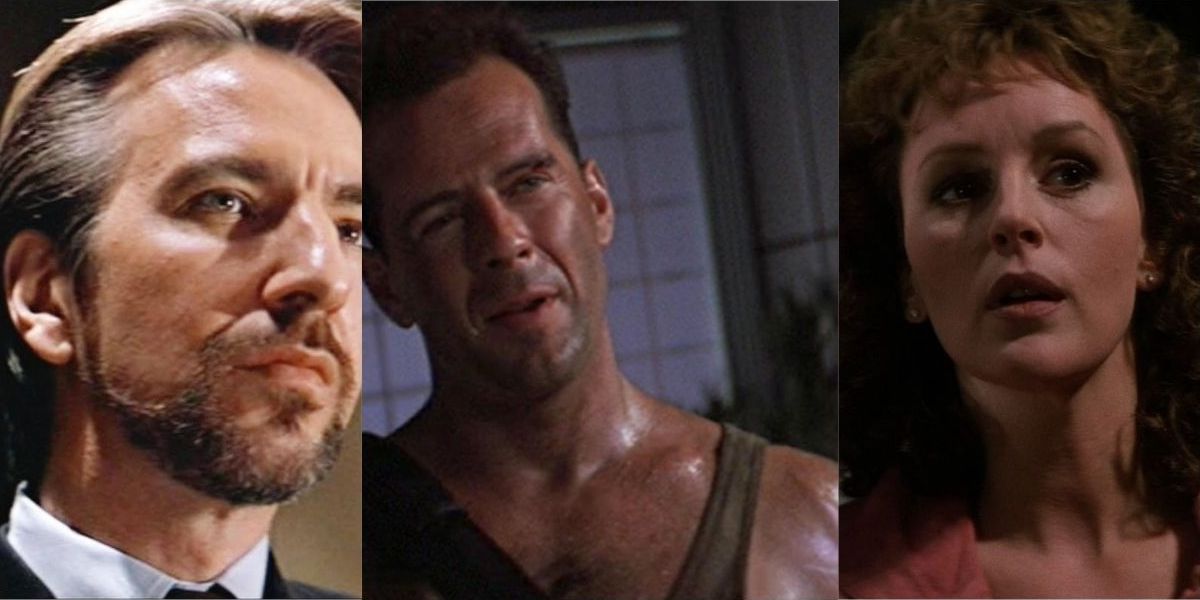In
the last article, I introduced the relational arc, the most common of
the several intra-narrative structures erroneously lumped together as
“subplots.” Using Raiders of the Lost Ark, I showed how the
inclusion of relational arcs added “depth” to the story’s
character dimension, but stopped short when it came to the question
of theme. In this installment, I pick up where I left off, but with a
different movie, The Matrix.
Like
Raiders, the central plotline of The Matrix is fairly simple and
straight-forward. Here is its plot in a nutshell: In a world where
humanity is enslaved by machines, Neo is recruited by the human
resistance; Neo is trained by his mentor Morpheus to become “The
One”; through betrayal, Morpheus is captured by the antagonist
Agent Smith; Neo rescues Morpheus; Neo defeats Agent Smith by
believing his is indeed The One.
Summarized
thusly, we have a purely functional story, one that aligns with the
tried-and-true “Hero’s Journey” pattern. However, the story is
fairly one-dimensional. To “dimensionalize” the story and give it
greater “depth,” the storytellers do the same as in Raiders: they
“unfold” character relationships already present within the
central plotline, adding multiple “relational arcs.” In The
Matrix, we may identify three relational arcs: Trinity’s “romance”
with Neo (I put romance in quotations for a reason), Cypher’s
betrayal of his comrades, and Morpheus’s mentorship of Neo.
Just
like Marion and Belloq in Raiders, Trinity, Cypher, and Morpheus do
not exist outside of the central plotline, nor are their relational
arcs simply tacked on to the existing narrative. All three characters
and their inter-personal relationships already serve VITAL FUNCTIONAL
ROLES in the central plot. Morpheus serves a MENTOR and LEADER role.
Trinity is the HERALD character and Neo’s GUIDE. Cypher, of course,
is the TRAITOR directly responsible for Morpheus’s capture at the
Midpoint Crisis Event. The Matrix, however, expands these existing
story relationships into relational arcs by asking a simple question:
“Why do these characters do what they DO?” WHY does Morpheus
insist that Neo believe he is The One? WHY does Trinity become so
personally involved in Neo’s journey? WHY does Cypher choose to
betray his brethren?

Once we unfold these layers of the
narrative—adding depth to the dimension of character—we find
something like a family melodrama operating underneath these
once-purely functional relationships. Morpheus is an adoptive father
who believes his life’s purpose is to nurture a gifted child to
maturity. Trinity, the eldest child, feels emotionally conflicted
over her new brother; drawn to him, wishing to believe what father
says of him, but with doubts. Cypher, on the other hand, is the
overlooked middle child jealous over daddy’s new favorite.
This
unfolding of character relationships does more to benefit the story
than adding greater depth to the dimensions of plot and character. It
takes what is otherwise a cold, cerebral, purely functional
narrative, and humanizes it by recasting its actions in terms of
human need and emotion. As a result, this fantastic sci-fi narrative
becomes relatable to its audience because they can now understand all
actions in human terms.
But what of the dimension of
THEME? Many writers on screencraft have rightly claimed that one of
the greatest benefits of expanding a narrative through “subplots”
(whichever variety of form these “subplots” take) is in service
of communicating the story’s theme. A good theme is pervasive. It
permeates all story elements, deciding what is relevant to the story
and what is not, unifying all actions and events under a common
expression of meaning. In fact, all plot and character actions might
be considered dramatic metaphors designed to ultimately communicate
this conclusive meaning. However, a theme is an abstract,
multi-faceted, and thus difficult to represent thing. It exists in
the realm of ideas, not physical action.
As such, a cinematic story cannot
state a theme, it can only imply a thematic message through a line of
action presented on screen. Yet the capacity of this single line to
express an abstract idea is limited to the explicit details of its
unique conflict or situation. It thus can give only one tiny instance
of a universalizing idea. And if the narrative is too simple or
straight-forward, the audience may not receive enough material to
even grasp what that idea might be. However, “subplots,” with
their mini narratives, provide the story with opportunities to
present the theme from other angles, within other situations, and in
relation to additional conflicts or character relationships. In other
words, “subplots” provide opportunities to dimensionalize a
story’s theme by communicating different aspects of the same
thematic idea through other dramatic situations. As a result, the
audience may “see” the multi-facted nature of this abstract idea
from various angles and better grasp the message the story wishes to
convey.
So
what is the theme of The Matrix? A purely external, premise-based
reading would say The Matrix is a story designed to prompt questions
regarding the nature of Reality: What is really “Real”? What is
really “True”? What is just an illusion? How can we tell the
difference between truth and illusion?
But let’s recast these thematics
in human terms: If modern philosophy has taught us anything over the
past two centuries (a subject the Wachowskis hold considerable
knowledgeable about), it is that there can be no certainty regarding
just what “Truth” and “Reality” are. Every trend in modern
philosophy has cast further and further doubt on traditional notions
of metaphysics, the human mind, and the social reality which
surrounds us. What is merely perception? What is simply a made-up
social construct? How do we reconcile spirituality with empirical
science? The bottom line is that “reality” is subjective. We
accept something to be “real” or “true” because we personally
believes it to be so, or because we agree with the claims made by
outside authorities on the subject. In other words, “reality” is
a matter of FAITH. Faith is defined as a belief in something which
cannot be absolutely proven. We are able to make our ways through
life with some certainty because we have FAITH that certain ideas,
perceptions, and concepts are indeed real and true.
As
such, FAITH is the true theme of The Matrix. We see this quite
clearly in Neo’s Character Arc. Neo’s fate, the fate of the human
resistance, and indeed the fate of all humanity rests on the question
of whether Neo can place faith in the idea that he is The One;
whether or not he can truly believe everything his mentor Morpheus
teaches him. As described below, the relational arcs involving
Morpheus, Cypher, and Trinity also center upon issues of faith. As
such, the inclusion of these relational arcs serves to dimensionalize
the story’s theme by presenting other characters who, like Neo,
also struggle with issues of faith, but in different ways and from
differing perspectives.
Morpheus
is a man of absolute faith. He believes without reservation in his
mission, in the prophesies he has been told, and that Neo is indeed
“The One”—even though this all has yet to be proven. Morpheus’s
personal goal is to indoctrinate Neo with his faith so Neo will
believe as strongly as he does. But, as several pieces of dialogue
between other characters indicate, Morpheus is so blind in his faith
that it actually constitutes his character flaw. Morpheus’s faith
is so absolute that he foolishly sacrifices himself at the story’s
Midpoint so save Neo, shouting “He’s all that matters!”

Cypher,
on the other hand, is a man who has lost all faith. His
disillusionment so so profound that he, like the Biblical Judas, is
willing to betray his teacher and return to false illusion. In
Cypher’s only scene alone with Neo, Cypher wastes no time
undermining Neo’s shaky faith in Morpheus’s teachings. “Did he
tell you?” he asks, “Did he tell you why you’re here? – Geez!
What a mindjob! What do you say to that? So you’re here to save the
world?”
Trinity’s
relational arc, it turns out, is the most complex. While most would
quickly brush off the Trinity/Neo arc as yet another “romantic
subplot,” this relational arc in fact resounds with the story’s
theme far more strongly than any other. However, this thematic
significance is hidden behind the illusion of a typical “girl falls
in love with boy” tropeline until the syuzhet finally reveals a
pivotal piece of fabula information late in the third act. At this
moment, Trinity confesses that the Oracle prophesied that she would
fall in love with The One. This revelation rewrites everything we
previously understood about the Trinity/Neo relational arc. We now
know that the question “Is Trinity in love with Neo?” is
intimately tied up with the question “Is Neo the One?”;
conversely, the question “Is Neo the One?” is attached to the
question “Is Trinity in love with Neo?” With this, we discover
that the “romance” between Trinity and Neo is in fact a story of
Trinity’s struggle with her FAITH. Trinity wants to believe
Morpheus when he says Neo is the One, yet she is uncertain because
she is unsure whether she loves Neo. But if she does sense growing
feelings for Neo, is this because Neo is truly the One or only
because she wants him to be the One? This explains why Trinity is so
emotionally invested in Neo from the beginning of the story to its
end. She wishes to believe, but is suffering a crisis of faith.

In
addition to dimensionalizing the theme of faith, Neo’s
participation in these relational arcs serves a subtle yet
significant role in shaping the narrative discourse so that the
dimensions of Plot and Character work together to deliver the story’s
ultimate thematic message: Neo’s interactions in the relational
arcs impact the development of Neo’s Character Arc, which
subsequently affect the actions Neo takes in the latter half of the
story, which set up the climactic event and the overt thematic
message conveyed by Neo’s ultimate victory. Neo is able to defeat
Agent Smith only because he has acquired full and total faith, both
in himself and everything his mentor has taught him. Anything less
would would have resulted in failure.
So,
in the end, the faiths of Neo, Morpheus, and Trinity are rewarded
(while Cypher’s lack of faith is punished), and humanity has hope
for the future because of that faith. This theme is the reason why
The Matrix, a film which depicts a nightmare dysptopian future,
leaves its audience in such uplifted spirits. The message of The
Matrix, communicated by its Character Arc and supported by its three
relational arcs, is that humanity will survive its modern,
technology-driven world that now lacks all certainty about what is
“Real,” as long as we continues to have FAITH.
But
what then of Raiders of the Lost Ark? I concluded the previous
article with the question of why Raiders’ storytellers chose to
unfold the relational arcs between Indy/Belloq and Indy/Marion, but
left all other character relationships “flat.” My suggestion was
that these two relational arcs were developed because they were
particularly useful in the communication of the story’s theme. So,
what is the theme of Raiders of the Lost Ark and how do the two
relational arcs help express it?
When
sniffing out a theme, the best place to start is the protagonist’s
Character Arc. And yes, Indiana Jones DOES have a Character Arc in
Raiders (despite what some less-informed sources on the internet
might tell you).
Indiana
Jones begins Raiders as a man who sees value only in the material.
Meanwhile, he shows no interest in, and even scoffs at, things of
immaterial value (such as emotional human relationships, the ideals
of a higher cause, a belief in a higher power, and so on).
At the story’s inciting
incident, when Indy is informed by US Agents that the Nazis have
found the location of the Ark of the Covenant, presumably to use the
Ark’s power to conquer the world, Indy jumps at the chance the beat
the Nazis to the Ark first. Indy does this not out of any sense of
patriotism or concern over the fate of the world (he never betrays a
hint of either), but because the Ark is a highly-valued material
object that he, a professional treasure hunter, considers the
ultimate prize. Not only does Indy care little for the geopolitical
conflict surrounding the Ark, he shows no interest in the sacred or
deeply-religious value of the Ark. As a Professor of Archaeology,
Indy adheres to an objective, scientific view of historical
artifacts. Like the golden idol from the movie’s prologue, the Ark
is merely buried treasure to be dug up and sold to a museum. (Watch
the prologue sequence. The film’s opening presents a clear contrast
between the religious superstitions of the native peoples and Indy’s
purely material apprehensions of the idol.)
Indy
maintains this attitude for much of Raiders. Yet, by the story’s
conclusion, Indy has grown into a man who can indeed recognize value
in the immaterial, in the intangible, in the spiritual or idealistic,
over the strictly material. It is a subtle rather than a profound
shift, motivated not so much by the events of the main plotline, but
in the drama of his two relational arcs.
To
begin with the Indy/Bellow relational arc: Thematically, Belloq
serves as a “dark mirror” figure to Indiana Jones; identical in
some aspects, the inverse in others. This is made explicit in the
arc’s most significant stand-alone scene: the conversation between
Indy and Belloq in the Cairo cafe in Act 2A, where Belloq states the
(now cliched) line, “You and I are very much alike.” Belloq is an
image of what Indy could become if he should take his material-value
mindset too far. Belloq is also an archaeologist and treasure-hunter,
but he has grown morally and ethically bankrupt in his pursuit of
valuable objects. Whereas Indy is merely indifferent to the
geopolitics surrounding the Ark, Belloq is positioned as a traitor to
the ideals of the free world. Though never explicitly stated in the
film (and, technically, set in 1936, the movie takes place before
open hostilities broke out in Europe), Raiders relies on its
audience’s knowledge of history to emphasize Belloq’s moral
bankruptcy. Belloq is a Frenchman collaborating with the Nazis to
find an object that may help the Nazis conquer the world. Belloq does
this, however, not because he supports the Nazi cause (that would be
a form of idealism), but because he would work with the Devil himself
to procure a materially-valuable object like the Ark. Furthermore,
Belloq is presented as a thief. On two occasions, Belloq steals away
an object Indy has risked life and limb to retrieve, showing that he
no longer respects even the unwritten rules and ethical guidelines of
his profession.
Belloq presents the dark side of
the story’s developing theme. The Indy/Marion relational arc,
however, provides a force to nudge Indy in the opposite direction. If
we walk through the main beats of this arc, we see Indy’s
progression along the thematic line. Indy’s first encounter with
Marion is intended as purely transactional. He is to give Marion some
money, she is to give him the headpiece he needs to locate the Ark.
But Marion does not see it this way. She is upset at Indy for
breaking her heart years ago. Though Indy says he is sorry, it is
obvious he remains indifferent to Marion’s feelings and the value
of their previous relationship. He just wants the headpiece.
When Indy arrives in Cairo with
Marion as his partner, Indy sees this as merely a business
relationship, despite Marion’s attempts to restart a personal
friendship. When Marion is kidnapped and supposedly killed in the
marketplace sequence, we encounter the arc’s next major beat.
Distraught, Indy gets drunk in a cafe. Following the old saw that
“you don’t know what you got until it’s gone,” Indy realizes
he has lost something of great immaterial value that he did not
appreciate before.
Yet when, lo and behold, Indy
finds Marion alive again, tied and gagged in the Nazi camp, what does
Indy do? He leaves Marion there, despite Marion’s protests, because
freeing Marion might jeopardize his pursuit of the Ark. Though Indy
has gotten back what he has lost, he still prizes the material more –
thus, Marion remains of secondary importance.

Next,
we encounter one of the most interesting sequences in Raiders from a
structural standpoint in which the two relational arcs intersect:
Belloq unbinds Marion, gives her a beautiful dress, and treats her to
a candlelight dinner. In terms of the Belloq line, Belloq is
escalating his rivalry with Indy. No longer content with simply
stealing Indy’s treasures, he now desires to steal Indy’s love
interest as well. Though it is made clear that Marion is merely
playing along, it cannot be said that Marion is not a little bit
charmed by this development. Belloq has attractive qualities Indy
lacks, and it is highly unlikely that Indy would ever shower Marion
with beautiful gifts and romantic dinners. Thus, there is the
slightest hint that Indy, due to his material-mindedness, might lose
Marion to his rival. This suggestion is subtly implied when the film
intercuts Marion’s dinner with Belloq with Indy hard at work
uncovering the Ark at the Well of Souls. With this, like in The
Matrix, we find a personally-relateable metaphor on human relations
hidden within the fantastic premise: Like so many professional men
obsessed with material success, Indy risks losing his romantic
partner to a rival while he is busy at work because he has ignored
his partner’s needs.
When, after the story’s
Midpoint, Indy and Marion are reunited in the Well of Souls, Indy
actually expresses jealousy when he sees Marion in Belloq’s dress.
However, the crisis forces the pair to quickly reconcile their
differences and work together on common ground.
After several long sequences in
which Indy escapes the Well of Souls, chases down and recaptures the
Ark, we are treated at the end of Act 2B to what is the most clear
and obvious “romance” scene of the movie. Safe aboard a ship back
to America, Indy finally softens to Marion, shows appreciation for
her value, and they kiss (though the film smartly has Indy falls
asleep before the romantic relationship can be fully consummated).
But something should be noted about this scene. It occurs after the
Ark is safely in Indy’s possession. It is only now that Indy’s
material desires have been satiated that he is fully capable of
considering and appreciating the great immaterial value of his
relationship with Marion.
Yet
when Belloq and the Nazis reappear in the following sequence, taking
both the Ark and Marion, the question is now which Indy values more.
Indy’s character seems to have arced when, ambushing the Ark’
procession with a rocket launcher, he offers to let Belloq keep the
Ark if he releases Marion. Yet when Belloq calls Indy’s bluff, Indy
cannot bring himself to destroy the Ark. This indicates that Indy
still personally holds the material value of the Ark to be of at
least equal importance to the value of his relationship with Marion.
As for the movie’s climax,
thematically, it is a bit confused, arguably constituting the movie’s
biggest flaw. Indy survives the climactic event by closing his eyes
as Belloq opens the Ark. This suggests that Indy now understand that
the Ark is more than silver and gold, but something of power and
value beyond our petty materialistic understanding. Unfortunately,
the narrative has given no previous events to explain how or why Indy
came to this realization. There is thus a hole in Indy’s completed
Character Arc – possibly the reason why some (falsely) assert that
his character does not arc.
Yet of course, this is untrue.
Indy’s Character Arc is subtle, and would be practically
unobservable without the story’s two relational arcs, explaining
their importance to the narrative and its expression of theme. We see
some of this subtle change in character in Indy’s final scene. Indy
again loses the Ark, this time to the US Agents. Yet his vocal
complaint is, “They don’t know what they have there,” meaning
that Indy now realizes the Ark is more than a material treasure, and
its immaterial value should be recognized and appreciated.
Nevertheless, he gives up to have a drink with Marion, suggesting
that he will go on in life with a renewed appreciation for things and
relationship beyond the material.





.jpg)















